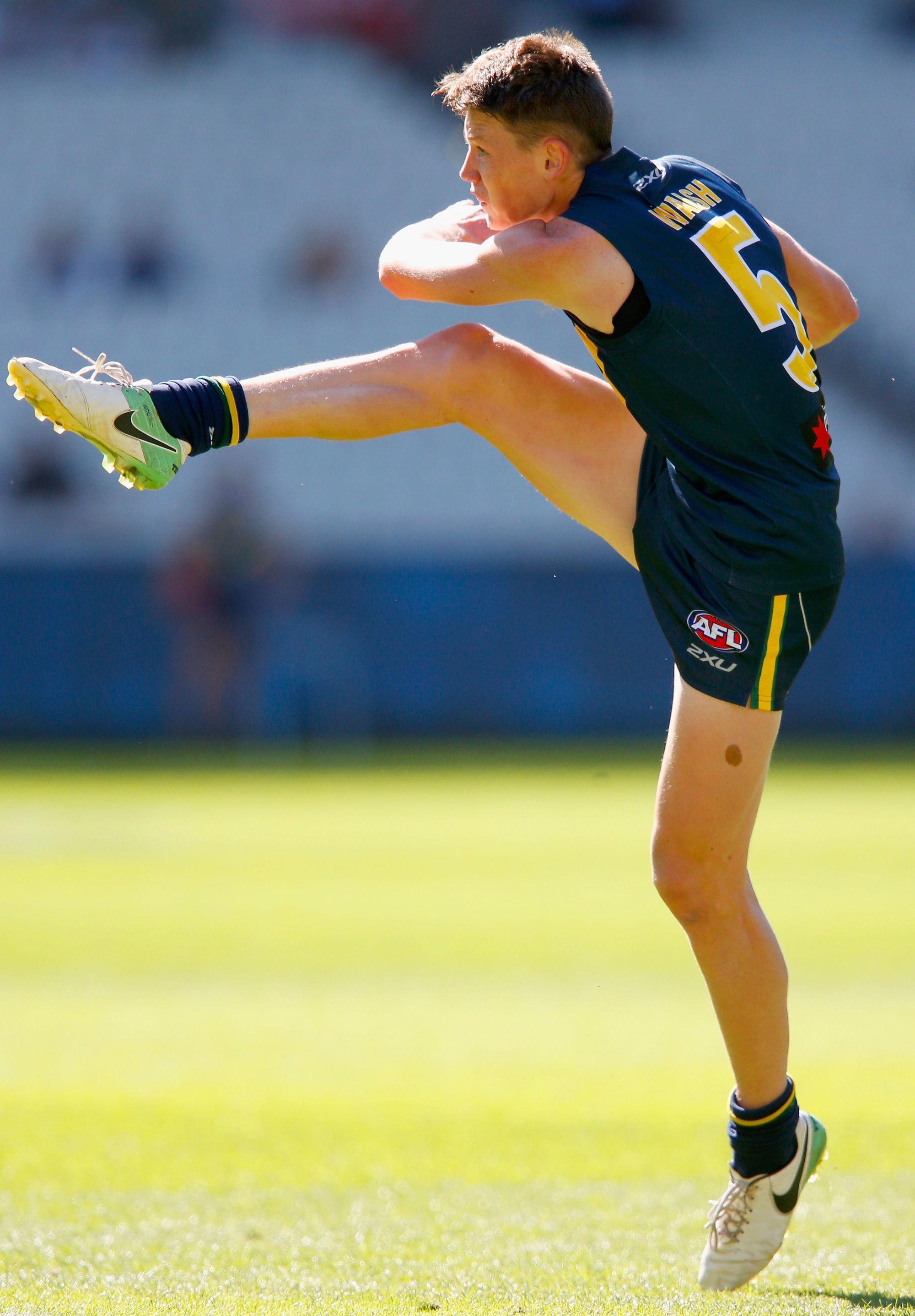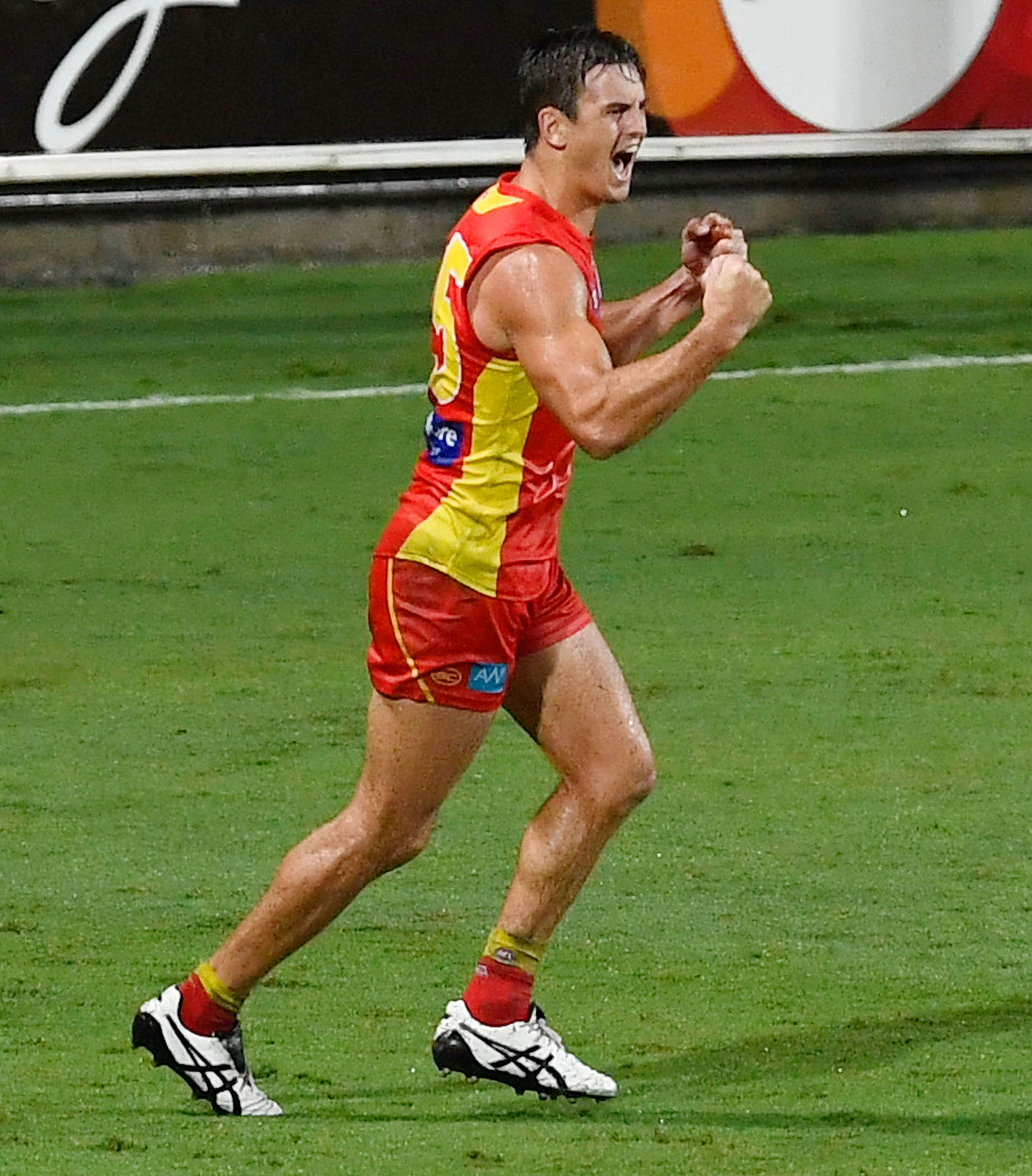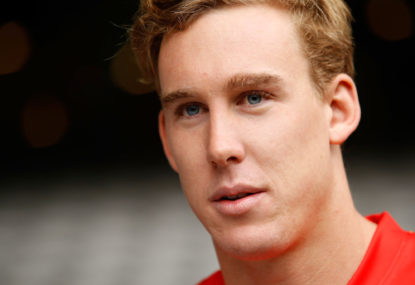With another mammoth loss by the Gold Coast over the weekend, it seems almost certain that captain Tom Lynch will look to move back to a Victorian club, where he will likely see much more success.
The Suns are no strangers to players leaving to seek greener pastures, but Lynch’s departure looms as a litmus test – both on and off-field.
The skipper leaving could be an irreparable tear in the fabric of the already delicate culture that coach Stuart Dew has been trying to stitch together.
Lynch is one of the game’s best players – he’s certainly the Gold Coast’s best player – and his leaving would signal to his younger teammates that there’s not much future to be had on the glitter strip. They have lost Dion Prestia, Jaeger O’Meara, Josh Caddy, Gary Ablett, Charlie Dixon, Brandon Matera, Adam Saad, and Zac Smith in recent years, all of whom have gone on to play well in other teams, and all of whom would be in the Suns’ best side.
The losses of Ablett and O’Meara arguably hit the hardest, but Lynch leaving would be catastrophic, nearly to the point of no return in terms of being able to build a successful culture.
However, it seems like that’s what will happen, and so the Suns must try to make the best of a bad situation.
They have two obvious options come October – let Lynch leave as a restricted free agent and pocket the compensation pick, or seek to trade him and demand a pick and a player in return. Unfortunately, both are likely to leave the club on a hiding to nothing, seeking to choose the ‘least worst’ option.
[latest_videos_strip category=”afl” name=”AFL”]
Option 1: Use free agency compensation at the draft
If Lynch leaves as a restricted free agent – Gold Coast opting not to match a bid for him – the club is likely to receive a pick between three and five, given their current ladder position.
The top end of this year’s draft pool is strong, and features an excellent crop of taller players – one of Max King, Ben King, or Jack Lukosius shapes as a forward-line replacement. They could also net Sam Walsh, who is the draft’s best midfielder, or another talented player like South Australian Izak Rankine.
Any of these players would be a good pick up, however, taking this option poses several risks.
Firstly, none of these players are from Queensland. For many clubs, a player’s origin wouldn’t be an issue; however, Gold Coast have such a bad retention record that any may decide to leave at the end of their initial two-year contracts. Also, other than Lukosius, who has played SANFL footy, they’re likely to take time to develop, meaning that they won’t be able to mirror Lynch’s impact next year.
And that’s the rub – Gold Coast recognised the shortcomings of their list in recent years, and set about making amends through the draft. Two years ago, they stockpiled picks four, seven, eight and ten, bringing in four quality players, but also players who have taken time to develop.
The club’s list profile makes this an issue – outside of its developed core of David Swallow (97 games), Michael Rischitelli (104 games for Gold Coast) Jarrod Harbrow (132 for Gold Coast), Steven May (106), Sam Day (98), Aaron Hall (97), Rory Thompson (86), Kade Kolojashnij (70), Touk Miller (60), and Jack Martin (66), the team has 19 players who have played 55 games or fewer, and have Michael Barlow, Aaron Young, Lachie Weller, and Jarrod Witts who have all played games for other clubs, but are still fledgling Gold Coast players.
That’s a staggeringly inexperienced team, and while the top end has some talent, it’s not enough to carry the team every week. Adding another high draft-pick would just compound the pain, committing them to yet more years of on-field malaise.

Sam Walsh of AFL Academy (Photo by Darrian Traynor/AFL Media/Getty Images)
Option 2: Use free agency compensation to trade for players
In this scenario, the club receives picks three of five from the AFL, and decides that, instead of hitting the draft, they will use that pick to trade in a player from another club.
That’s great in theory, and there’ll likely be many clubs interested in improving their draft hand at the top end this year, however it’s unlikely to end in the desired outcome.
The fact is that top players just don’t want to play there, which is why, when Weller expressed a desire to move back to Queensland, the club decided that they would get him, whatever the cost.
Otherwise, in recent years they have secured Aaron Young from Port Adelaide, Jarryd Lyons and Harrison Wigg from Adelaide, and Michael Barlow from Fremantle. Lyons is a decent player who was probably unlucky not to break into Adelaide’s best side, but the others are handy depth players at best.
Those inclusions aren’t major improvements, and while the club’s culture and on-field fortunes are in such a bad way, they won’t be able to attract decent players.
This means that if the club does decide to trade pick five, it’s likely going to be for a player who is worth well below that. Other clubs can see that the Gold Coast is in a precarious position, and will leverage that to either lure players from the club, or to offer up badly-skewed trades.

Jarryd Lyons of the Suns (Photo by Ian Hitchcock/Getty Images)
Option 3: Trade Lynch for a pick and a player
It’s rare that eligible free agents have left via trades, and it’s unlikely to happen in this circumstance, but it’s worth exploring.
Again, there are several issues here. As with Option 2, the Suns are unlikely to get a player of high quality from the club receiving Lynch, and would likely have the same result were they to on-trade the high draft-pick received for Lynch.
The second is that Gold Cast have a history of playing hardball with departing players, demanding overs and then having to accept far less. We’ve seen this in receiving compensation for a departing player (a la Ablett and O’Meara) or in trading for an established player, as evidenced by last year’s bizarre decision to switch the club’s prized pick two for Fremantle midfielder Lachie Weller and pick 41.
I can understand Tony Cochrane and the other club top brass wanting to get the best possible outcome in these situations, and they probably did well to get the returns that they did, but it doesn’t help the club’s reputation at the trade table.
The pattern goes something like this:
Step 1: three months before the draft, Gold Coast chairman Tony Cochrane comes out and makes a bellicose statement about the player in question being required, and that the club will not let them go cheaply.
Step 2: repeat Step 1 a few more times, but add ridicule from fans and the media about Gold Coast’s asking price.
Step 3: Gold Coast refuse to budge from their offer of pick five for another club’s star player (think Rory Sloane, Dustin Martin or Patrick Dangerfield).
Step 4: at the beginning of trade period, Gold Coast decree they won’t be taken for a ride and will emerge with a fair outcome.
Step 5: at the 11th hour, the Suns realise they had better get whatever compensation they can for the departing player, and agree to trade pick five for a fringe player, plus a lower pick.
What should the Suns do?
I’d take Option A.
It may be the most publicly unpalatable, given the club has been in the competition for eight years with nothing to show for it, but they’re trapped in a vicious cycle of being unable to attract good players largely due to their poor culture, which is an issue that could take years to fix.
Rather than continuing to pursue the current strategy of picking up other club’s discarded players to try and prop up a shallow list, it’s better to take some short-term pain and embark on a total rebuild. At the moment, they’re trying to paper over severe structural cracks in the hope that somehow, the building will remain standing and may even fix itself. That’s a recipe for disaster – eventually, it’s going to come crashing down around them.
It’s better to invest in the draft, and get the selections right (which obviously is a challenge in itself, and I could write a whole other article about their woeful drafting), and then build the culture around those players so that they invest in the club and make it somewhere they want to be.
It might take another three or four years, but we’ve seen with clubs like Carlton and Brisbane in recent times, which also found themselves in dire on-field circumstances due to terrible list management strategies, that investing in the draft is worth it in the long-term. Yes, both of those clubs are still mired in the bottom reaches of the ladder, but both now look to have the talent to set themselves up for success.
Since Brisbane, in particular, has taken this tack, player retention rates have improved, and provide a good model for their younger Queensland sibling.
Whatever the Suns’ decision, they need to come up with a forward-looking strategy that weighs up the short-term against where the club wants to be in five years.
Because, without it, there’s a real possibility that the Suns will cease to exist.































































































